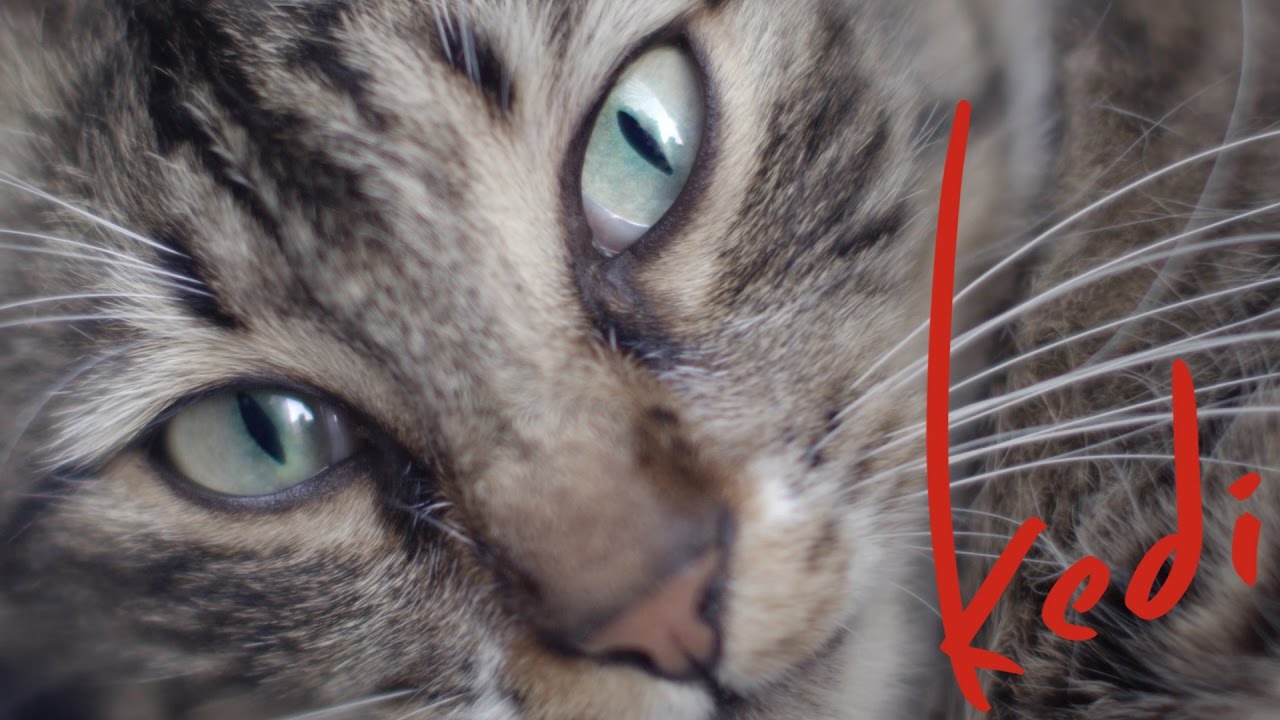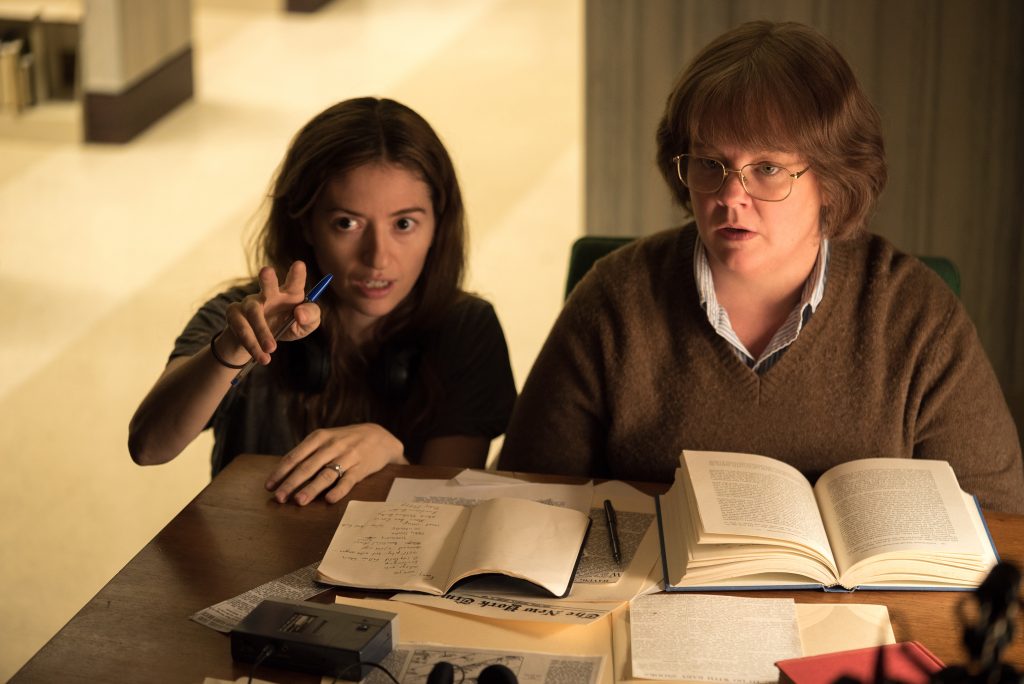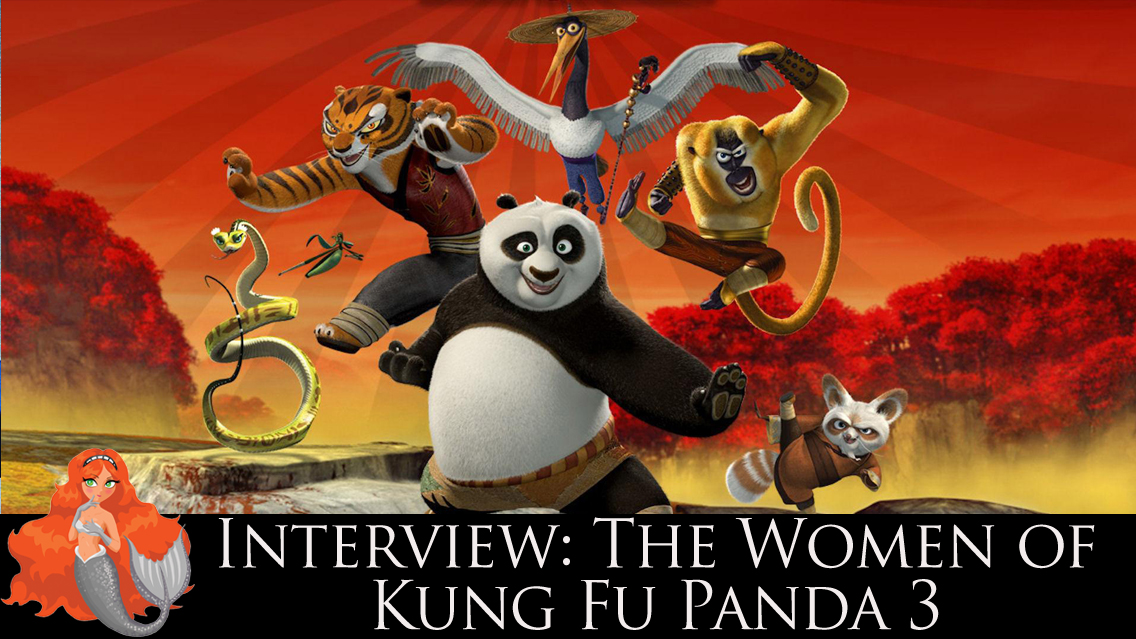

The best representations of Girlpower are those where women lead by example, going beyond gender to erase bias altogether. As the media has covered lately, it’s a challenge that continues. Three women at DreamWorks, who have worked together on the entire Kung Fu Panda franchise, are girlpower personified. Jennifer Yuh Nelson has the distinction of being the first woman to singlehandedly direct an animated feature. She did so on Kung Fu Panda 2, a film that was nominated for an Academy Award. She returns as co-director of Kung Fu Panda 3. Melissa Cobb, beyond having produced every film in the Kung Fu Panda franchise, was just announced as the new president of Oriental DreamWorks. Clare Knight is one of an impressive list of successful, well-respected women in the field of editing for film. As part of my work for Jerry Beck and Animation Scoop on Indiewire, I had the privilege to speak with Yuh Nelson, Cobb, and Knight about the new release they are so proud of, and their perspectives on being women changing Hollywood from the inside. He has allowed me to post the interviews in their entirety here. Thanks, Jerry!
To hear Yuh Nelson tell it, DreamWorks is one of the best places for women to work. I didn’t just take her word for it, I asked a variety of friends and acquaintances, off the official record, about how DreamWorks treats women. They all said the same thing. At that studio, talent, invention, and skill trumps gender every time. In a world where bias in both gender and race continues to be an issue, it’s heartening to know DreamWorks is leading the charge towards real equality.
Here are the complete interviews with all three powerful women of Kung Fu Panda 3:
Kung Fu Panda 3 has just released simultaneously in theaters in the United States and China. It’s the first time an animation studio has created two different versions of one movie at the same time,and it’s a great experiment in global positioning by DreamWorks, as they partner with Oriental DreamWorks. As of a few days ago, both studios are headed by women. We at Animation Scoop thought we should talk to some of the women of Kung Fu Panda 3, as they are definitely some of the most powerful women influencing the world of animation today.
First in our three interviews is JENNIFER YUH NELSON, who has the distinction of being the first woman who directed an animated feature, Kung Fu Panda 2, who is now the co-director with Alessandro Carloni, of Kung Fu Panda 3. She talks about why she chose to partner with another director, the artistry possible with computer animation and stereoscopic 3D, and what it’s like being a role model for girls all over the world:
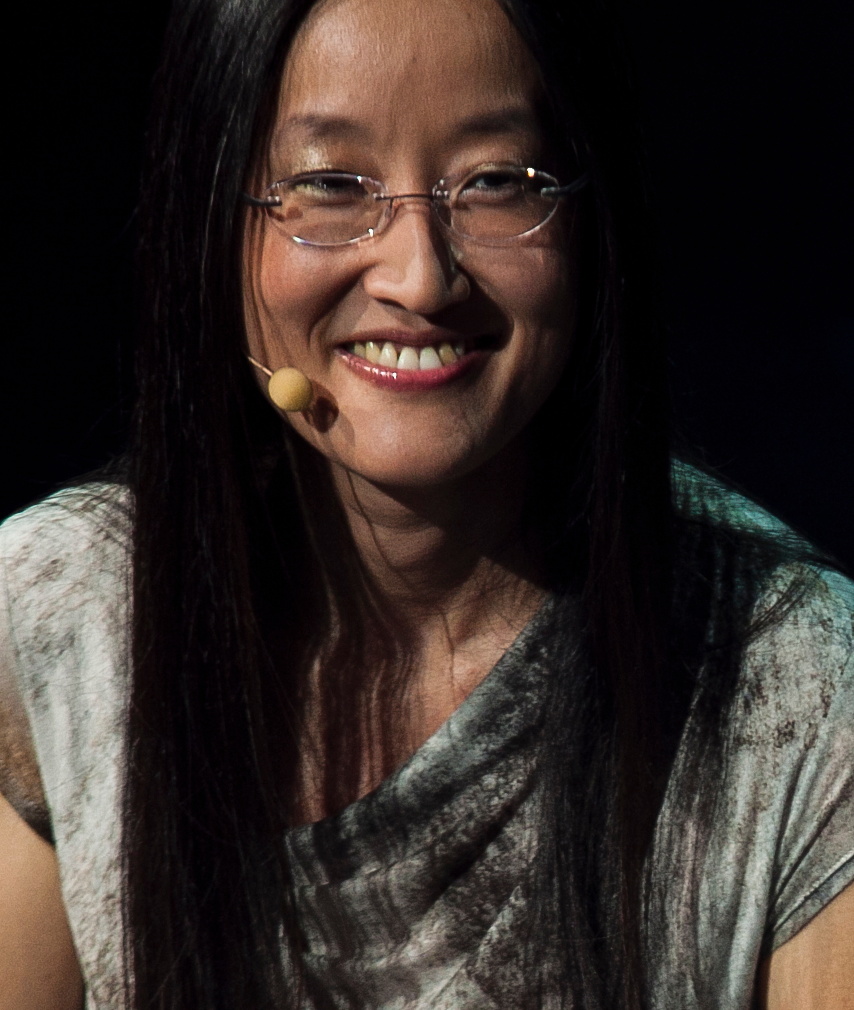
L: I know you were the first woman to direct an animated feature on your own but I with Kung Fu Panda 3 you are co-directing with Alessandro Carloni.
J: I actually asked for him personally because we’ve been working together since the very beginning he was my story artist on Kung Fu Panda and Kung Fu Panda 2 we’ve been collaborating on these characters forever and he’s actually been part of all three films now and it seemed like a good time to just bring him on as my partner on this because it’s a lot of work to make one of these films, we’re very simpatico in terms of how we work and we know how we think-it just was a great partner to have.
L: How was it different having a co director?
J: It’s interesting because we each have our strengths. He has certain things he can bring that I don’t necessarily do and there are things that I do that he doesn’t, so we can specialize in certain areas. for instance I love to do the intense action and the crazy stuff and Alessandra loves these sweet little moments… its so funny it’s backwards. He also does animation so he can bring a lot of great subtlety. I think it really brought the movie up because both of us could do what we were passionate about.
L: Do you have any examples of how this simpatico partnership was most successful in what we see on screen?
J: Ale had lots of really cute ideas for the pandas. You have all these panda characters that are cuddly and cute, and all of them have to move and act differently. And Ale is an animated and could speak to the animators and speak their language. Whereas I’d really have to rely on Dan (Wagner, head of character animation) to translate what I mean.
L: Can you talk about the nods to classic films? I’m thinking of the panda village and Lost Horizon, just as one example.
J: I think the one thing specifically that is most consistent is that we want to harken back to martial arts movies because that’s kind of the genre we’re paying tribute to, so there are some similarities to a lot of films, because they all feed off each other! (she laughs) But specifically the reveal of the panda village was something that we experienced firsthand and reference we put in. The hidden village was something we found when we went to research in China we climbed a mountain in the Sichuan province where the panda sanctuary is based, and we climbed to this beautiful, mist-covered, almost primordial place and when we turned these corners these moss covered old buildings would come into view, revealing themselves and it was so beautiful and so unlike anything we’d seen that we literally took those moments and put them into the film.
L: what a beautiful experience!
J: It was insane. It was so amazing and there’s nowhere else in the world like that, and we had to go there in person to experience that because no pictures or films would have been the same. To smell the moss in the air and feel the moisture on our skin, such bright vibrant greens that you can’t pick up on film. we had to really try to capture that in the movie because we took so much video and none of it captured exactly how it felt to be there. It was so atmospheric and we had to have that in the movie. You really can’t compare the reality of it as someone working on a production to just seeing pictures. Being there was essential.
L: You did two versions of the film, one specifically for China and another for the audiences in the rest of the world.
J: We did two films because the first two films were so embraced by the Chinese audiences we wanted to make something we could push it further with it and since this is a co-production it seemed like the perfect time to create something that felt native to Chinese audiences. Usually they have to deal with a dubbing situation or subtitles, and it takes you out of the experience. That’s why we wanted to make something that felt really immersive for them, but it takes a lot of work to make 2 versions of a movie! You have hundreds of artists you’re dealing with across the world and the scale of this movie was insane—we had a parallel pipeline going on where you had two versions recording Mandarin voice actors, getting it to be funny for Mandarin audiences going beyond a straight translation, and then animating it and lighting it, it’s a lot of work.
L: What kinds of differences are there in the two stories?
J: The visual differences for example included of course adjusting the facial acting, if they ad-libbed something we’d have to account for that.
L: The variations in visual artistry in Kung Fu Panda make for a beautiful film. There are lots of elements not often used in American animation included like the watercolor, pen and ink, and heightened graphics— What was the process in choosing the finished looks?
J: We actually tried to put in all the things we wanted to put into the first two films. We’re all the same people who’ve been working on the other films and we all had things we couldn’t do and had to leave on the table. We just couldn’t achieve them before. This time we have multiple new environments and different styles of animation. For instance that living watercolor technique you’re talking about—it’s always my goal to put 2D elements into a movie. The story in that particular spot was an ancient history story and wanted to give it a historical feeling which was why we used a historical calligraphy scroll come to life and it’s based on a famous Chinese scroll that we saw in a Chinese museum, a huge long beautiful scroll, and we all said “if we could make that come to life that would be so great. and we said every job, traditional, after effects, everything all together it’s technologically amazing to be achieved. and also we have those new environments that give a scale to the movie that are the spirit realm and the panda village. The spirit realm, having no gravity, having this massive space allowed us to do huge action shots. All that we just couldn’t do before. We just couldn’t get the scale, we’d have to cheat them. This time we found ourselves more free.
L: Did different departments work together or were there specific artists create aspects and you seamed it all together?
J: It’s definitely both, because all the artists do amazing things. For instance, Raymond Zibach the production designer for all three of them, in the first movie he designed that beautiful vision of Po, what his dream was at the beginning, that graphic, pushed quality, and this time the fact that we could make that into 3D instead of 2D hand animation and make that environment as graphic as if it was a 2D designed shot, that’s actually a lot harder than it sounds, to make something not realistic, something graphic. And he could push to achieve something like that. Also a lot of the calligraphy and the Chinese elements we had Chinese artists that would put in elements for the Chinese audience like the calligraphy actually means something so the audience when they read it they’ll understand. So there were definitely little things we were able to do that specifically leveraged the artists’ talents.
L: So you have artists in both China and here, it is an interplay of the two groups?
J: It actually is an interplay because even though there are two groups in different countries, they are the counterparts of the artists here. We have one surfacing department, just split between two continents. They are given a job but they just choose who does what. For example Oriental DreamWorks did a lot of the surfacing of the village and all the little paintings on all the gables and everything? They have meaning, and they could do that because they know what that means, we don’t over here necessarily know about that.
L: So the rest of the world also gets to experience elements that are accurate and unique to China in the story they wouldn’t otherwise see.
J: It gives such a richness to the look of the movie, and even if you don’t catch every detail at once it’s so overpacked with it you’ll notice some of it. I think it’s really nice to have such an authenticity, it’s a huge source for us to be able to lean on people who have that knowledge.
L: The 3D in this film and in the whole franchise has such a unique and believable quality but it’s very otherworldly. Both the computer animation and the 3D stereoscopic vision.
J: One of my favorite things about the film is the look of it. We never go for realism. I think a lot of time when people go for 3D that’s the mistake. Because we’re never going for full realism—computer generated live action films like Avatar the goal is realism, like to make the audience feel like they are seeing something that is real, like Lord of the Rings had character design and environments to make it look real whereas we aren’t going for that, we are going for something that is theatrically, viscerally, and emotionally real. That’s why the colors pop, you have hard edges, you have graphic shapes, even the explosions and bits of dust that are kicked up have an art directed shape to them that fit the look of the film. That’s actually really hard to do, but it creates a cohesive and very real world of its own. It all follow certain rules. and when you look at the 3D version of the movie we sort of follow that as well. We use the 3D to reinforce what you’re supposed to be paying attention to as reinforce gut-level what you’re supposed to be feeling. We go for our own reality. I remember some of our guys saying it is way harder to make stylized art directed explosions of jade rather than a regular explosion of shrapnel. It all has to follow the rules of the KFP world than the kind that we’d expect to see in our own.
L: As to coming at creating these films, and being a director or co-director do you think that being a women helps you in any way for this particular franchise, when you have to think in a very non-linear inventive way?
J: I think more than being a woman is the fact that i’m an introvert. In the environment I work in people forget that i’m a woman which is wonderful it just shows what a wonderful environment i work in, no one treats me differently. They don’t think that because i’m a woman i’ll make decisions differently. Aside from that i’m an introvert and i’m a quiet person. The benefit of that is I listen. It’s not like my mouth is open and I broadcast everything and i’m drowning everyone out. When I’m listening to the incredible artists I work with and i’m hearing their specialized advice on what they would do with something then we can, all together, as a big collaborative group, all work together to achieve something together. So I think the best thing I have is the introvert’s ability to listen when you’re working on something as complicated as this and you have to really be aware of everyone’s specialized skills.
L: Do you see animation as more collaborative than live action?
J: I think they both would have to be. You’re still dealing with an army of people. It’s not like I can’t be very clear about what I want, it’s not like I can’t lead everyone in a very concise way, that’s not what i’m talking about. But in live action you have a very short time of filming where you might have to raise your voice a few times, but honestly the best directors I know are always very soft spoken people.
L: Given all in the news about how women are feeling underutilized in the industry, it sounds like your experience at DreamWorks is very positive.
J: Never once in my 18 years here has anyone said “you can do this because you’re a woman” or “you can’t do this because you are a woman”. It’s never even come up.
L: There are lots of young women choosing to go into this field now.
J: That makes me feel good. Just the other week an 8 young girl came up to me when I went to speak at an elementary school and she gave me a drawing and it was great and she said “I want to be just like you when I grow up and direct movies. And that just made me choke up. It was so cute and the reason why she’s looking at me is I look like her. It’s easier to visualize herself in the job. That sort of thing encourages me. I’ve been really fortunate. Lots of people support me and I forget. But sometimes things like that happen and I remember, and they say I encourage them, it makes me feel very happy.
L: What advice would you give women, or anyone who want to pursue animation as a career?
J: I think it’s very much skill based. It’s hard getting any kind of job. It’s great when people don’t consider gender in any decisions about hiring it really comes down to being really good. If you have a portfolio that just kicks butt people will just look at that, I can use that person, it doesn’t matter if they’re a man or woman.
L: A good portfolio is everything!
J: That’s what happened with me. As I said i’m very quiet, i don’t go around saying “I’m awesome!” but when I brought in my portfolio into DreamWorks and showed them what I could do, my art style is a lot wilder than I am.
L: Artists are almost always louder on paper. What about where you are now in your career surprises you most?
J: As quiet as I am I find it amazing I can stand in front of hundreds of people now and make a speech because i’ve had to do it so much. I’ve so much support from the people around me that I can achieve something like that, crazy introvert that I am, I never would have thought that would happen. It’s like what Po goes through when he hears “If you only do what you can do, you’ll never be more than you are now”. I never thought i’d be where I am now, but the fact that I am is pretty cool.
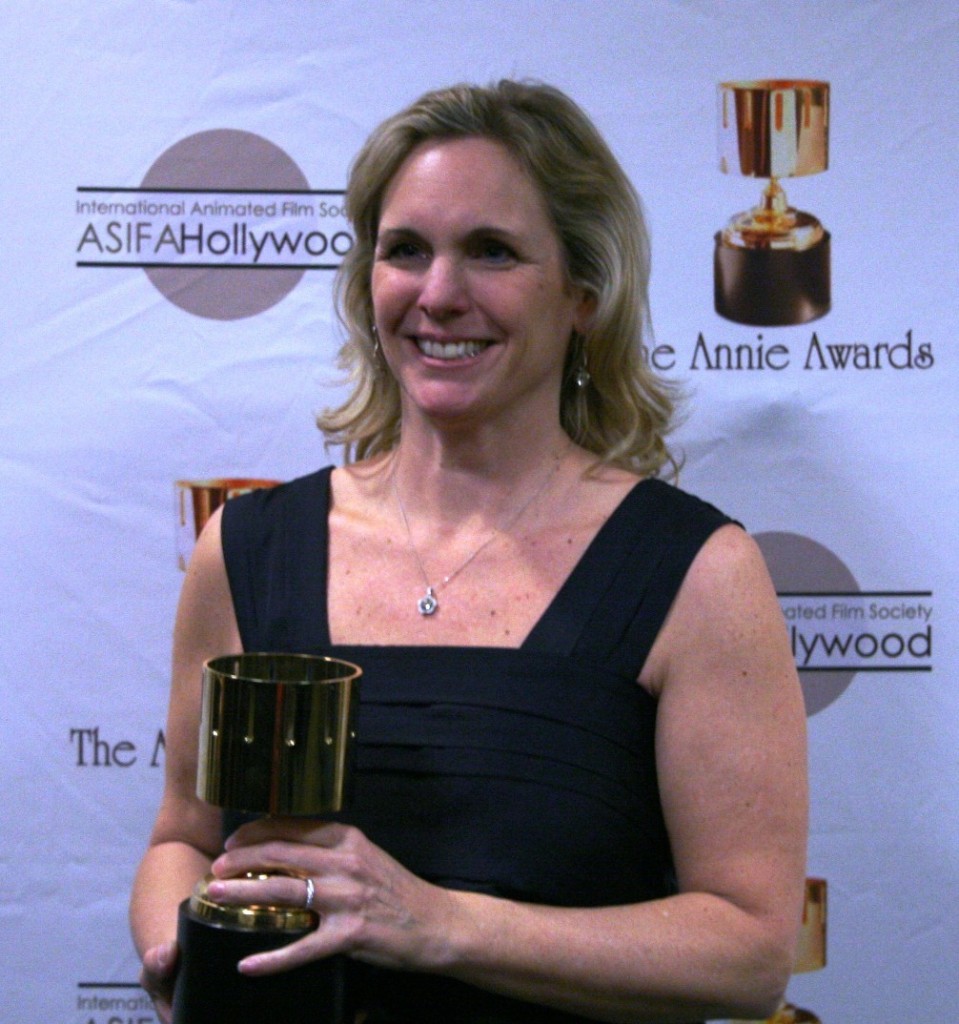
MELISSA COBB
Melissa Cobb has been producing films long and well enough for DreamWorks that she was just announced as the new president of Oriental DreamWorks, their new studio in Shanghai. That adds a third women to the top of their leadership, as she joins the ranks of DreamWorks Animation co-presidents Bonnie Arnold and Mireille Soria. Cobb is clearly very proud of the Kung Fu Panda franchise. It is known and loved all over the world and continues to break box office records worldwide. I spoke to her about Kung Fu Panda 3, her new position as Oriental DreamWorks president, and her perspective on being a female producer in Hollywood:
L: Congrats on the movie! and congrats on the great news of your position at Oriental DreamWorks. That’s really exciting. What do you wish beyond the box office numbers for the release of Kung Fu Panda 3?
M: We went way out on a limb with this and we’ve never tried it before and honestly it was a lot of work, it’s a lot harder to make two movies than one, and we just really hope it makes a difference for the Chinese audience, that they really feel that the movie is more organic and authentic for them. It’s been interesting because we were just over there and just started sharing the movie with audiences over there and it’s been really beautiful in a way. They feel so connected with Po as a panda and they feel so much ownership over the character that seeing that character speak in Mandarin is incredibly moving for them. It’s really wonderful to see.
L: How has the Chinese audience reacted and What are the differences in the Mandarin actors of KFP3?
M: every audience is a little different no matter where you are, over all the reaction has been similar and i’m happy to say there’s lots of laughter. Jackie Chan plays Po’s dad (he plays Monkey in the US release) in the Mandarin version and in the very emotional scenes around the middle of the movie—it’s just beautiful to see the extraordinary performance by Bryan Cranston of the character and then see another very different version of that same moment done in an equally emotional way by a very different actor.
L: Why do you think people who haven’t seen other KFP movies should see this one? What’s new to this film?
M: Obviously the big new thing in this one is all the pandas. (laughs) Returning his long lost community and returning to his roots is a universal feeling and a universal story and doesn’t require having seen any of the previous movies. The other thing is what our production designer Raymond Zibach has done with the spirit realm and the use of 3d in the movie all of those aspects that make it a very theatrical experience will make it compelling to anyone whether they’ve seen the other movies or not.
L: Can you talk about how the artistry of the film is informed in a significant way by animators working on it in China?
M: The scroll scene where we are recreating the back story of the village? There are Chinese scroll characters in it and you might say “that’s beautiful Chinese decorative writing on the scroll”..well it’s actually a famous poet in China interpreting the scene— he wrote about the scene, and so if you slow it down and actually read what he wrote it’s very poetic, beautiful and meaningful to a Chinese audience and might be invisible to the rest of the world. We gave the poet scripts and some images and said this is what’s happening and he interpreted it in his style.
L: What do you think Jennifer brings to the film as a director? Did the fact that she is a woman director have any influence on the way the film played out?
M: It is true that Jen is the most extraordinary action storyboard artists and directors, certainly in animation and maybe in all filmmaking these days. She is above and beyond in that way and a real student of action movies and a real auteur when it comes to how to conceive an action sequence and was definitely there for all the heavy lifting for all those sequences. I don’t think we ever create a story along gender lines i think we are far more gender neutral in that sense.
L: There is a huge surge of women coming into the animation field. Recently CalArts offered that 71% and UCLA said 68% of their animation student body is female Does that surprise you?
M: It does but it actually makes me really happy and i’d give Jen all the credit for that.
L: With these visual elements of the film having such diverse global influences, does it make it more ?
M: we really tried to have the art support the storytelling and reach new limits of the our artistic abilities and also how much the computer can pull off, i don’t think we thought of that but it’s an interesting point of view that it might translate more broadly because of the artistic merit. To me it’s one of those movies you have to go see on the big screen because there’s so much richness and detail and the art is so up there on the screen in a way that we are all really proud of. It’s the third movie we’ve all made as a team and we’ve all been working together for 12 years. You can’t really put a price tag on the value of working together for that long brings to the movie in terms of working with the tools in an extraordinary way. Every new film we work to incorporate new technology in an organic way into the storytelling.
M: We take three years to make a movie and in those years the technology department at DreamWorks is rapidly expanding the tools available to us.
L: With your position at Oriental DreamWorks, will co-producing be the future of DreamWorks or are you planning your own slate of films? What can we expect for the future of Oriental DreamWorks?
M: I think there’s going to be a interesting test case. It’s the first time anybody’s ever really done it and I think we’re all excited to see how it turns out, and that’s something we’ll have to consider very seriously moving forward.
L: What do you see as your biggest challenge in your new position moving forward?
M: (laughs) Learning Mandarin really fast? It’s a brand new studio honestly, we have a lot of people working there. We are looking forward to building on the co-production we’ve just done and building a new studio.
L: You are going to be doing different films?
M: We are figuring out the new slate and the production plan right now and hopefully in the next few months we’ll be able to give more insight into that but we’re looking into all the possibilities.
L: For those who want to be inspired, what part of being a woman has made a difference to getting you to the top of the industry?
M: It’s hard to know which part of being a woman has helped. I think animation is one of the most collaborative art forms that exist. That could be a quality that could be considered feminine, being collaborative, the ability to create consensus and pull people together and move forward without so much reliance on ego and problem solve in a group—it’s interesting…my daughter goes to an all girl school. They do so much more of their learning through group collaboration. It’s interesting to watch when it’s an all female environment. They all do their papers together and they all do their reports together and it’s a natural way for women to work. It’s a community and animation is really a community that way. DreamWorks has always been a community of collaboration. It’s about goals. It isn’t about politics or in-fighting or backstabbing. There isn’t any of that here. It’s very pure in that way.
L: Where does that come from do you think?
M: I think it’s Jeffrey (Katzenberg). He just cares about the idea at the end of the day, he really does. I just think he’s driven to excellence but he doesn’t care where it comes from, he just wants it to happen. You come into a meeting here and it’s amazing. If you look at the senior leadership at the studio it’s almost all women. It’s very unusual but it’s a great environment for sure.
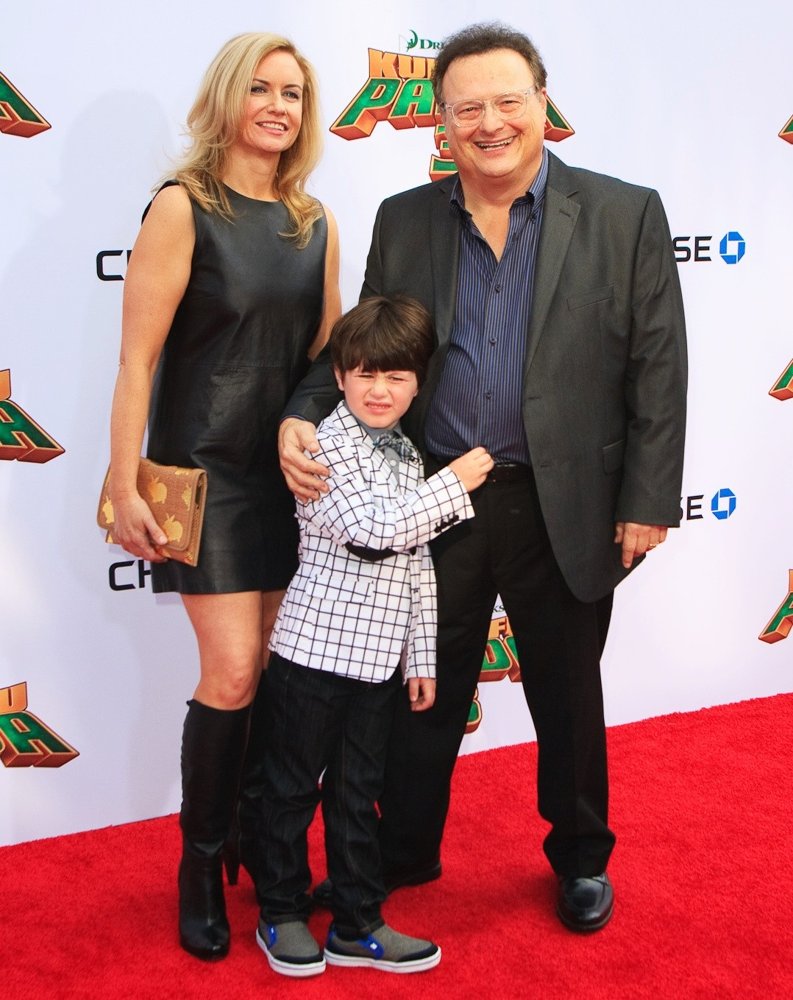
CLARE KNIGHT
Clare Knight has risen to the top of the animation field as an editor, a craft that has always been welcoming to women. They number among some of the best and most celebrated editors in history. I spoke to Clare about her career as editor and member of A.C.E. (the American Cinema Editors guild) and what makes editing for animation different and more rewarding to her. We also discuss what challenges she faced as part of the team that sculpted the final cut of Kung Fu Panda 3.
L: Can you start out by explaining how editing for animation differ from live action?
C: There’s a great book by called “When the Shooting Stops” by Ralph Rosenblum and Robert Karen and that’s generally what it’s all about when working in live action. The director shoots, then stops, and you edit. With animation you’re on from the beginning. You’re there from pre-production, building the whole story from the beginning using storyboards and dialogue and music and you kind of have to have an encyclopedic knowledge of it all. You’re there before anyone else, in the before, during, and after in the production process. You carry all the way through and you have to imagine a lot of areas of the production and imagine things that aren’t already there yet. You’re right there till the end and checking every print. It’s a much more collaborative process vs live action. I find i’m much more comfortable working in animation. You spend 4 years together and that’s not usually the case in live action. It’s a few months and then you’re done and you move on. It becomes a familial feeling.
L: What’s the difference as an editor creating for Stereoscopic 3D?
C: There’s a significant difference making it a more immersive experience and feeling and so you work very closely with the camera department to see how things will look for the eye in 3D, but you have to be very careful. It’s something that the audience is going to be a part of and i’m very careful to see where things are in space across the cut in a very practical way, but also you can have some great 3D moments. Like the snow. It makes me tingle. There are so many aspects of 3d you can make the frame into some kind of living space especially with Kung Fu Panda which is such a visual treat of what Ramone (the art director) has done it just comes alive.
L: How subjective can you be in animation when carving out the finished look of a scene?
C: What’s great is i’m right here when Jen is drawing the storyboard or Alessandro is working on it or they’re doing a pitch so they’ll come to me and tell me what they’re planning and i may have things that i feel might not work editorially. From the very beginning i’m very much a part of it. It becomes quite a personal journey. and with this movie, i’ve worked from the first and the second movie into the third with Jen and Melissa and i think we’ve gotten to a place where I know which way they are heading so it’s become a much easier process.
L: The visual aspects of the film with the watercolors, the ink and paint, and the graphic elements, I noticed the editing because it had to be seamed together with the rest of the film…
C: A lot of the time we work in various scenes and what I found exciting in this movie is we moved things around quite a bit and changing things within structures. One of the big ones we did was the introduction of Kai. It was in the first act and we moved the first part of it into the beginning of the movie. The rules of the spirit realm were quite challenging as we went along in the process would the audience understand our take on it? What chi is? and as we became more comfortable in our storytelling we moved things about quite a bit. The art direction, and all the production in the film was very collaborative. For the spirit realm to make sure it made sense, we brought in audiences and asked if they understood what we were doing…we had help also with crew from other movies who came and watched it and told us if we were on the right track.
L: as an editor what was the biggest challenge?
C: i’d have to say the spirit realm just trying to get a world that was clear and accepted by the audience. I also felt that the panda village and designing and defining the characters of each of them was a challenge and we did a lot of versions until we felt comfortable with what we had. the very end of the movie was also difficult, because this movie is all about the spirit and to get Po to that place has to make sense.
L: so far in my interviews you have all said DreamWorks has been quite easy in terms of being a woman in the film business.
C: what i find at DreamWorks is it’s always strengths and what people are good at. But with Jenn and Melissa and I, three women working on one film, i’ve really enjoyed it because we’ve worked enough together that we’ve developed out own language and I know what they’re expecting and what they want and I have great admiration for them both. At this studio i’ve certainly been very lucky and been accepted. My own personal journey on this movie franchise is that the first Kung Fu Panda was my first big movie. I’d done Madagascar but on that movie i’d met my husband (actor Wayne Knight). And on the second Kung Fu Panda I was married and my son had just been born. He became the voice of baby Po. WE were able to record him and put him in so it had a very personal meaning for me. and then in this last one also as an editor you don’t get to see your family much when you’re working so it felt great to have them both in the movie so i could see them a lot more and hear them.
L: Who does your son play in the new movie?
C: He plays Lei Lei. He loves it because his father is an actor as well. I wasn’t sure how he’d take being a girl, but he said “daddy’s been an elephant before so I don’t think it really matters and I think it’s ok”
L: In the film industry, editing is a very welcoming craft for women. Did you have idols that inspired you coming up?
C: Of course Thelma Schoonmaker, Martin Scorsese’s editor. And she has done extraordinary work but so many wonderful women editors and i’m a member of the A.C.E. and I go to a lot of the events and the celebrations and getting to know the other members it’s a great field to be in and there’s so much talent. When we were mixing we were working we were alongside the Star Wars team, which were women, Mary Jo Markey and Maryann Brandon I just loved loved it because i’d worked with Maryann on 2 and I feel it’s a lovely community. I don’t have an explanation for it, but i’m told—I was always aware what was going on in a room and had intuition on how people are and what people want and that’s been part of who I am. But also the puzzle of editing and trying to figure it all out is fascinating. Creative problem solving.
L: Those events for the A.C.E must be full of women. How wonderful.
C: Yes, it’s a majority. It’s great. I’ve been so intrigued to meet some of the people in editing it’s a great honor to be brought into the community. I’m not sure i’d ask “what do you think of this cut” but i want to!
L: maybe they want to ask the same of you! I’m fascinated by female editors because editing carves out the movie.
C: Yes, it’s the soul of the movie. I really wanted to work with Jen because I knew what her vision was and I wanted to be part of that process.


